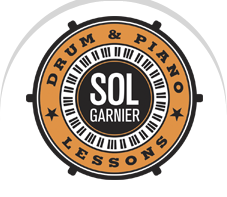In piano or drums, people are asked to become as ambidextrous as possible, meaning using the right hand and left hand with equal amount of skill. If you happen to have a dominant hand, the task can seem daunting.
I remember spending many hours feeling frustrated by the clumsiness of my left hand. I would go into what I call “begging mode”, because I had to implore my left hand to get better, or to, at least, keep up with what was going on.
Then I found a solution: I needed to use my left hand. Yes. Very simply. I had to use it. For everything, from turning a door knob to stirring a gravy. I told myself to pay attention to the left hand, don’t have it at the low hanging point of my arm doing nothing, playing dead weight. Make it do what you think is impossible to do: write a letter or swing a hammer, turn the pages of a book or flip a drum stick in the air.
And, the more I used it in real life, the better my control became on the piano or the drums. I still spent hours practicing just my weak hand, but my relationship with it had change. I understood what was wrong, what felt misplaced, and that helped me curtail the frustration it generated.
Then I had an epiphany of sorts. The weak hands of the world were here just for one thing: to teach patience to its owners.
